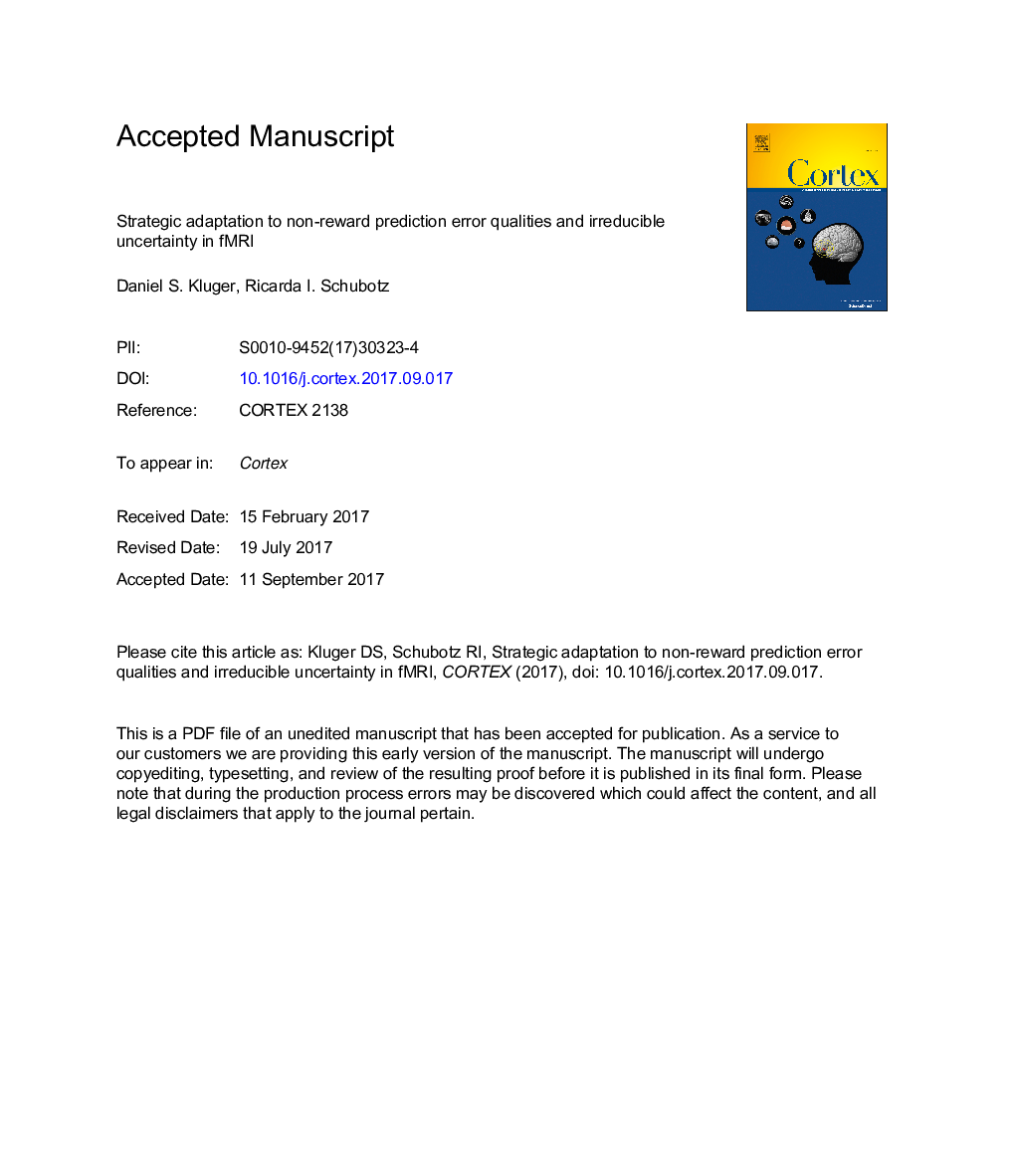| Article ID | Journal | Published Year | Pages | File Type |
|---|---|---|---|---|
| 7312284 | Cortex | 2017 | 43 Pages |
Abstract
Second, we investigated predictive processing as a function of statistical context (irreducible uncertainty). We hypothesised that the prospective scope of model-based expectancies is adapted to the stability of respective contexts in that unstable environments call for more frequent comparisons of expectancies with sensory input, resulting in stepwise predictions. Changes in environmental stability were reflected in activation of the angular gyrus and IFG for the highly uncertain context at potential points of prediction violation (checkpoints). Notably, this effect was not due to local fluctuations in stimulus improbability (surprise). Although further behavioural support is needed, data point towards a context-dependent adaptation of predictive strategies. Conceivably, enhanced neural responses at sequential checkpoints could reflect stepwise rather than full-length prediction. This strategic adjustment presumably relies on the iterant evaluation of model information retrieved from working memory, as suggested by strengthened functional connectivity of the parahippocampal area during epochs of high uncertainty.
Related Topics
Life Sciences
Neuroscience
Behavioral Neuroscience
Authors
Daniel S. Kluger, Ricarda I. Schubotz,
